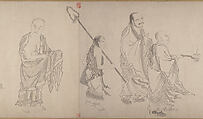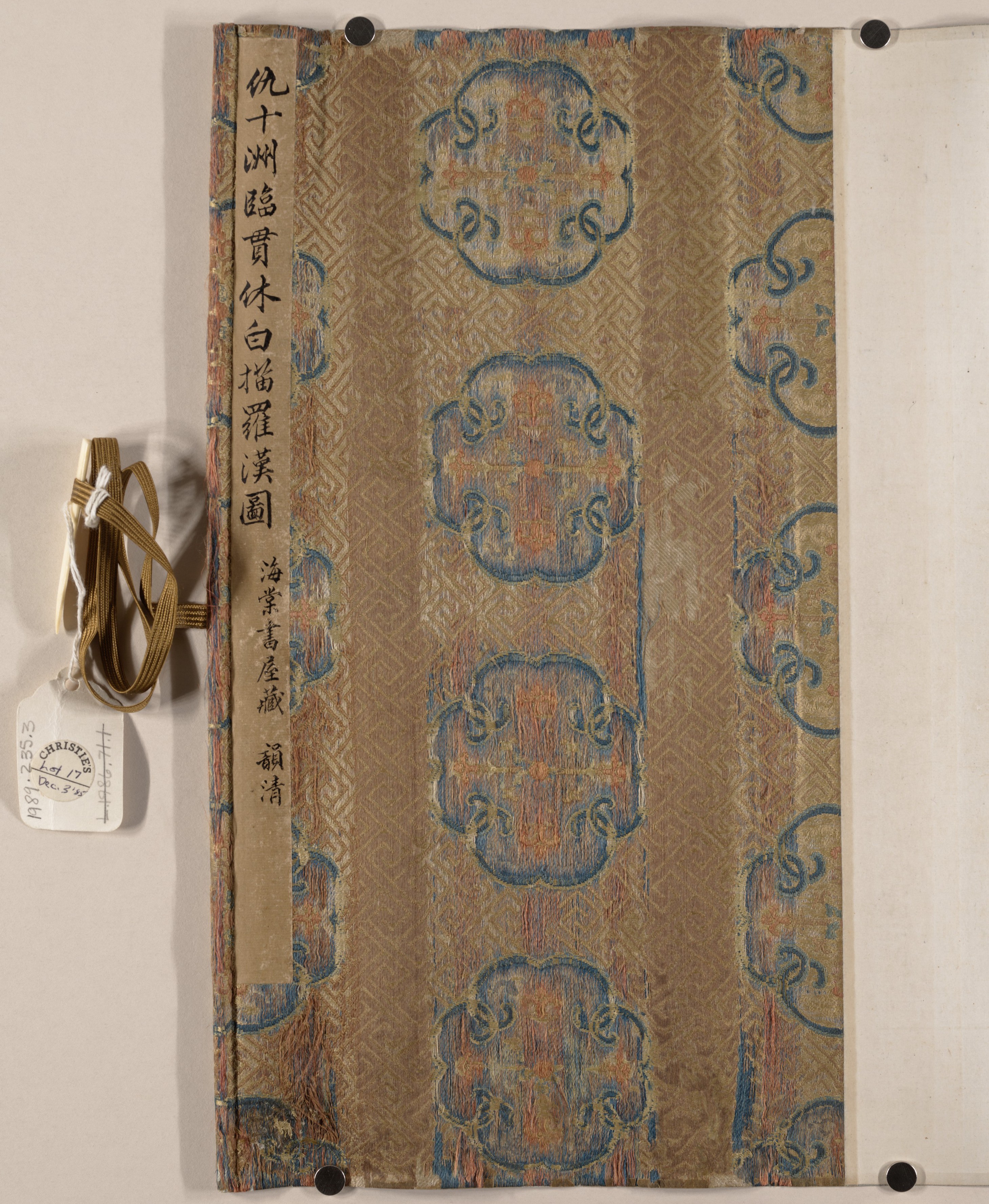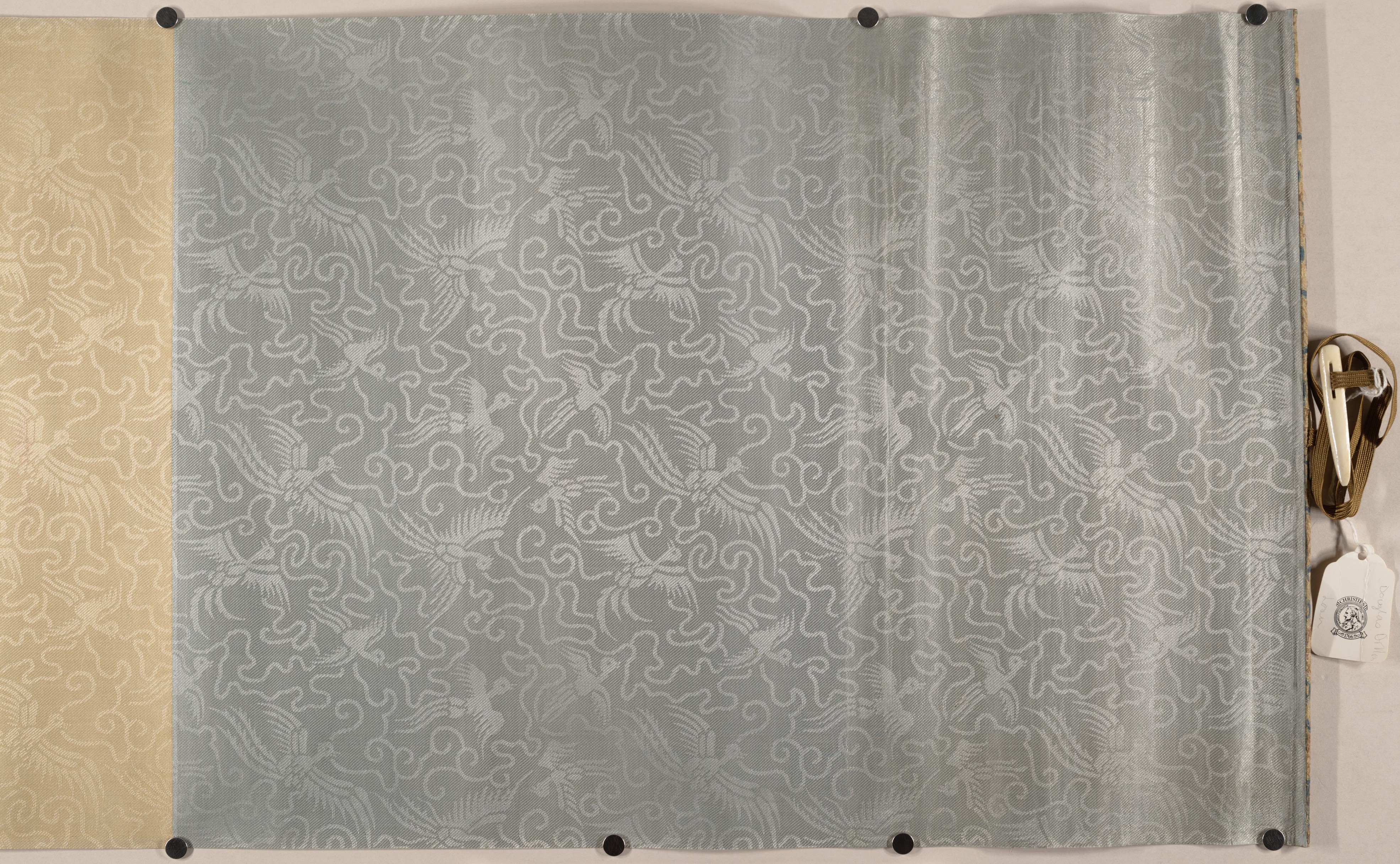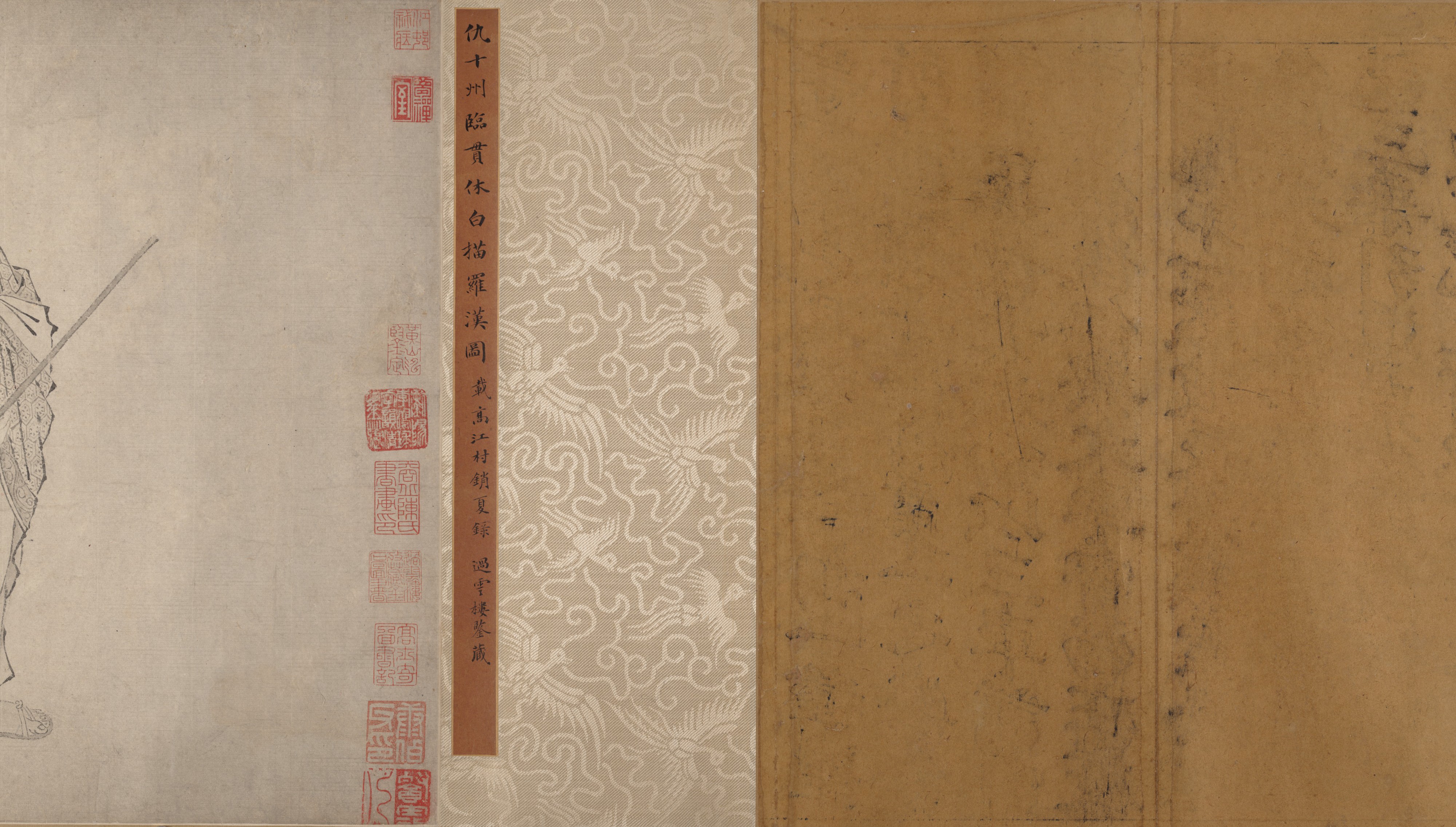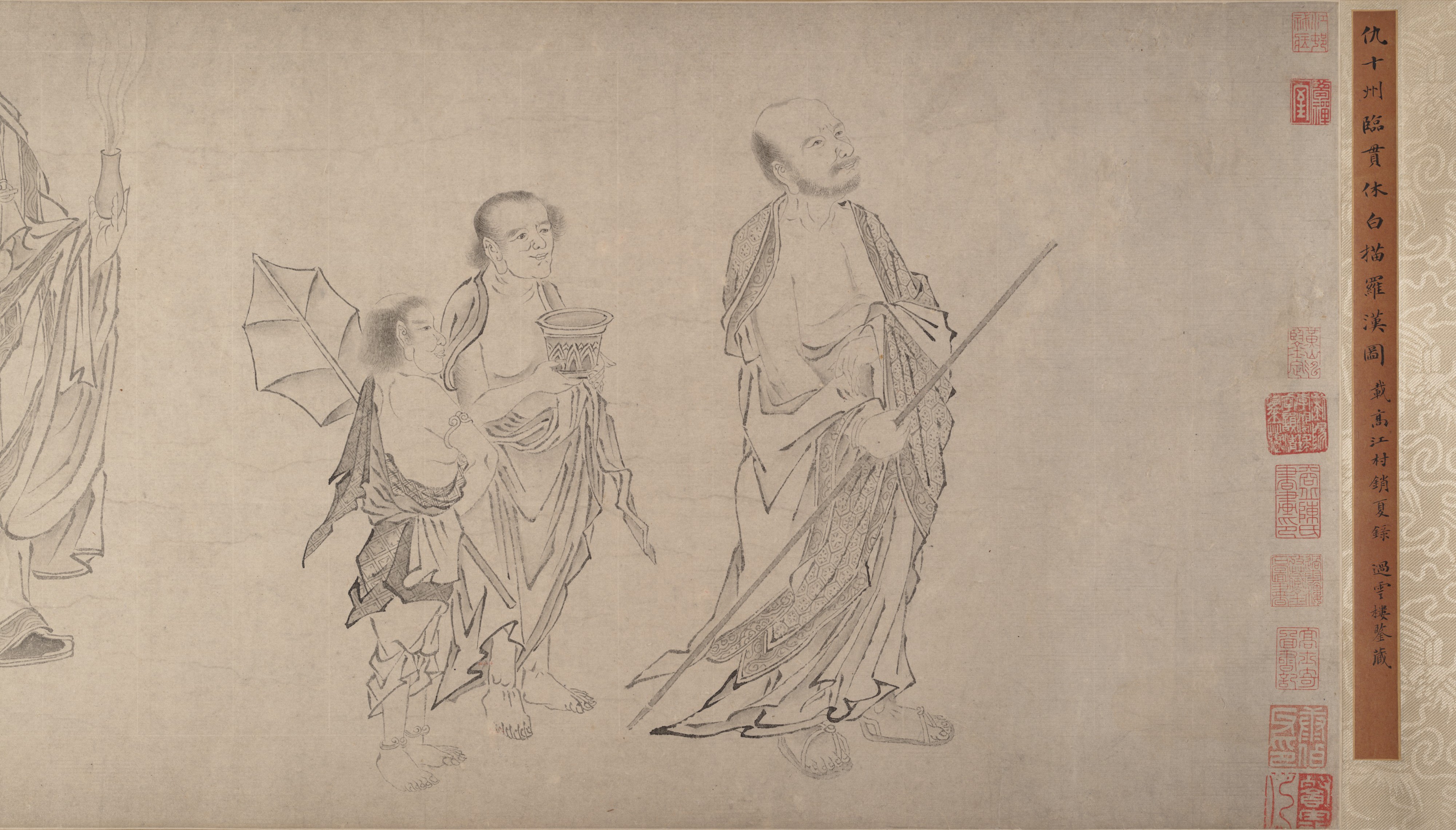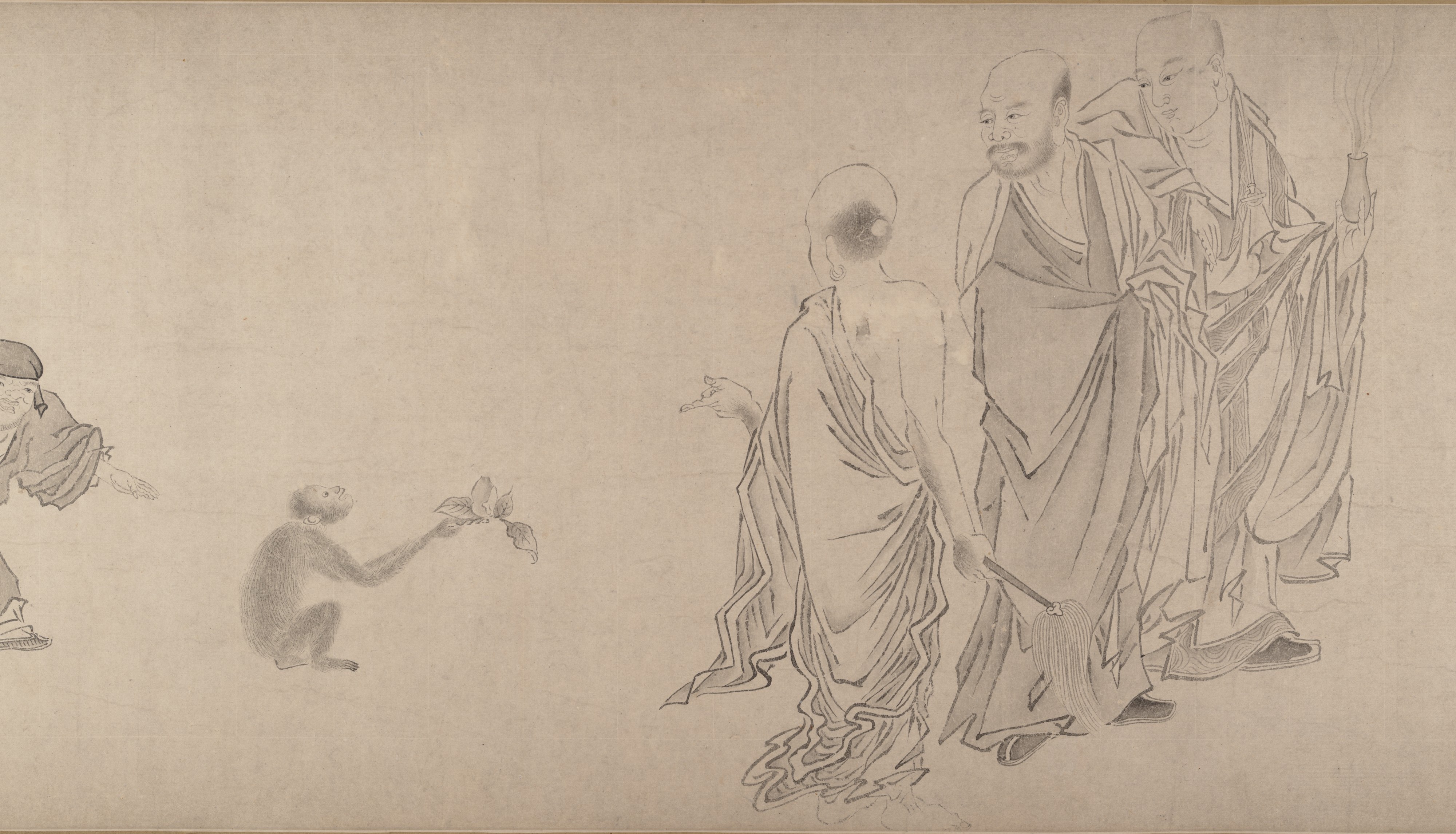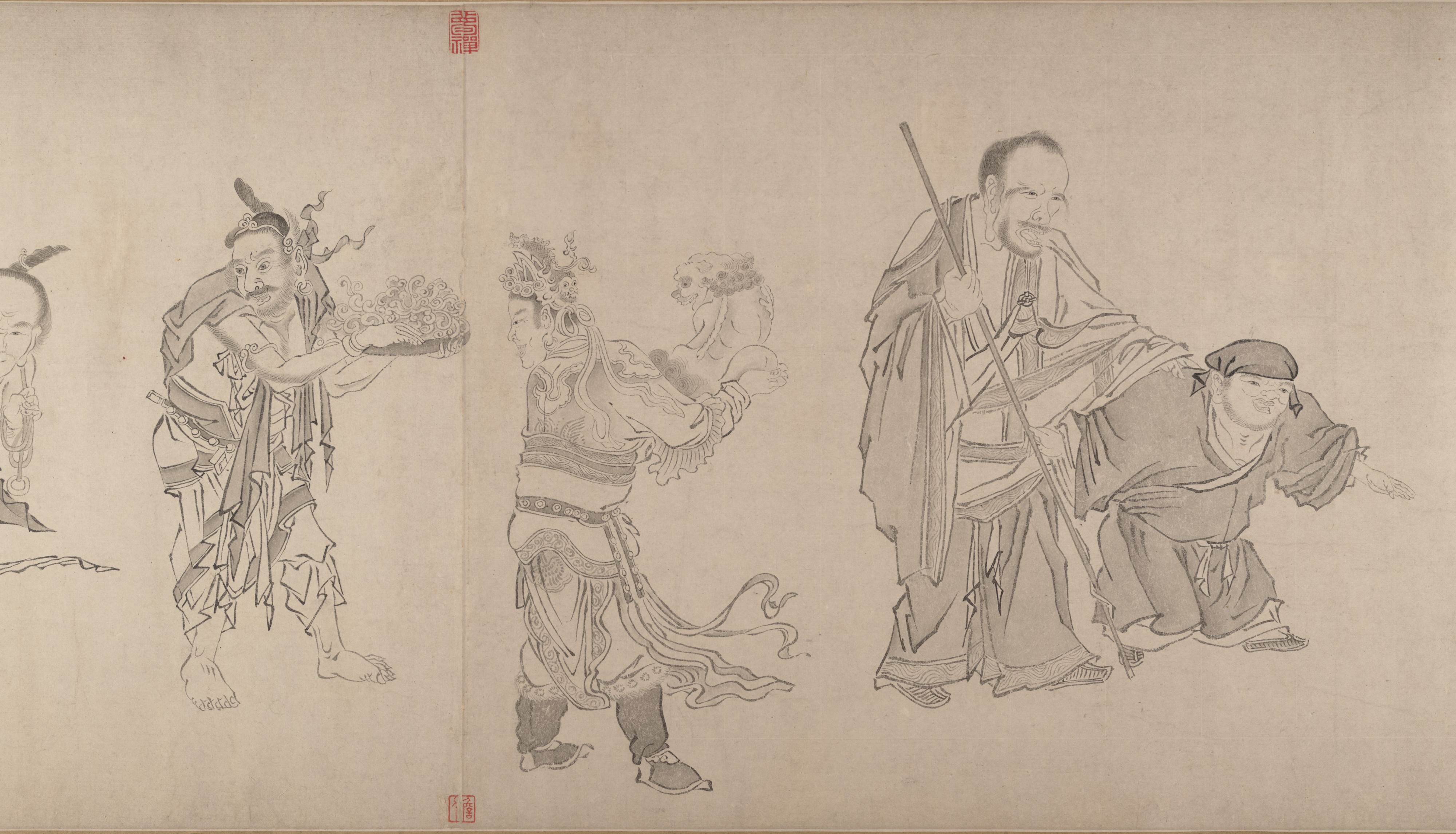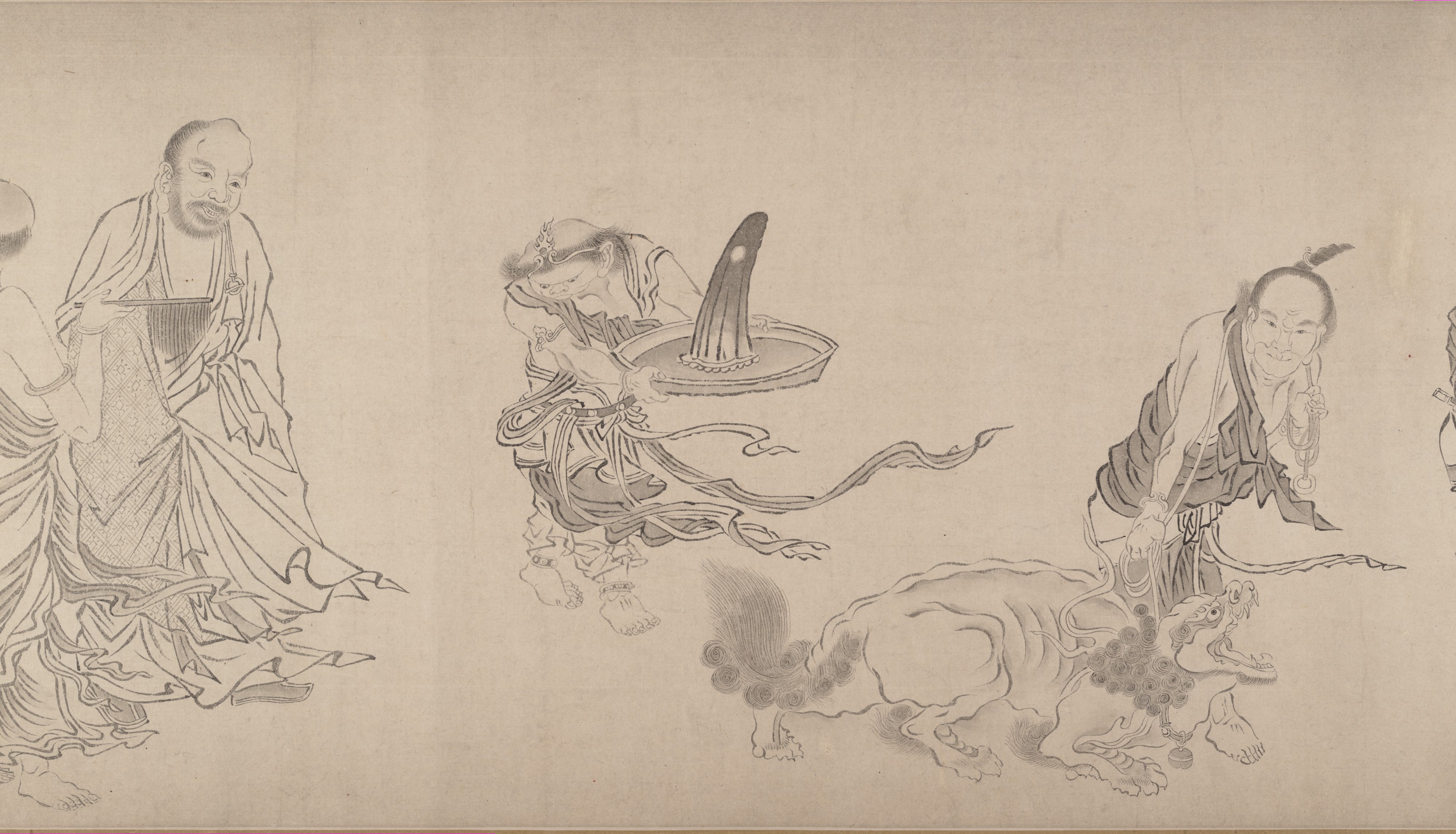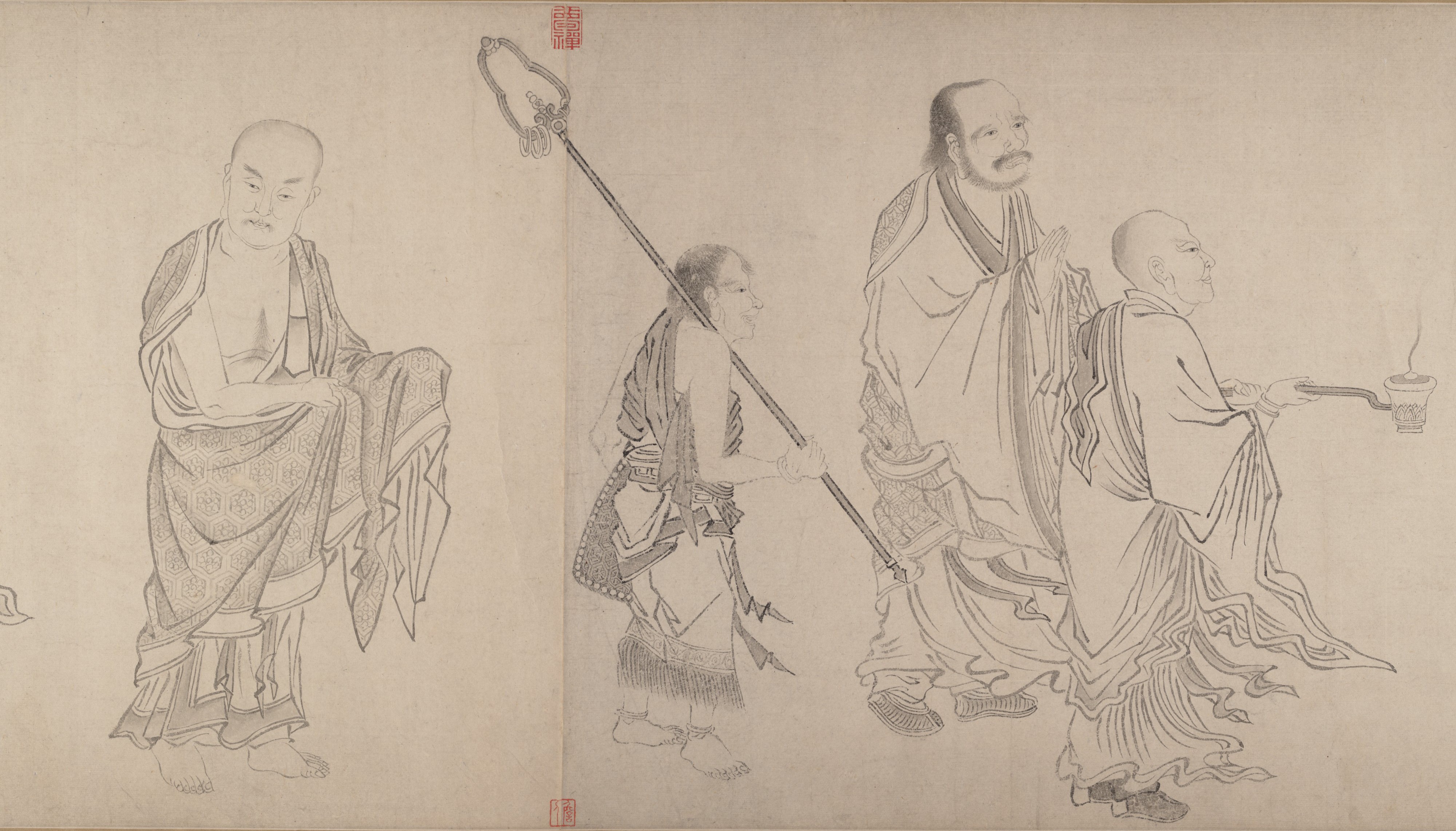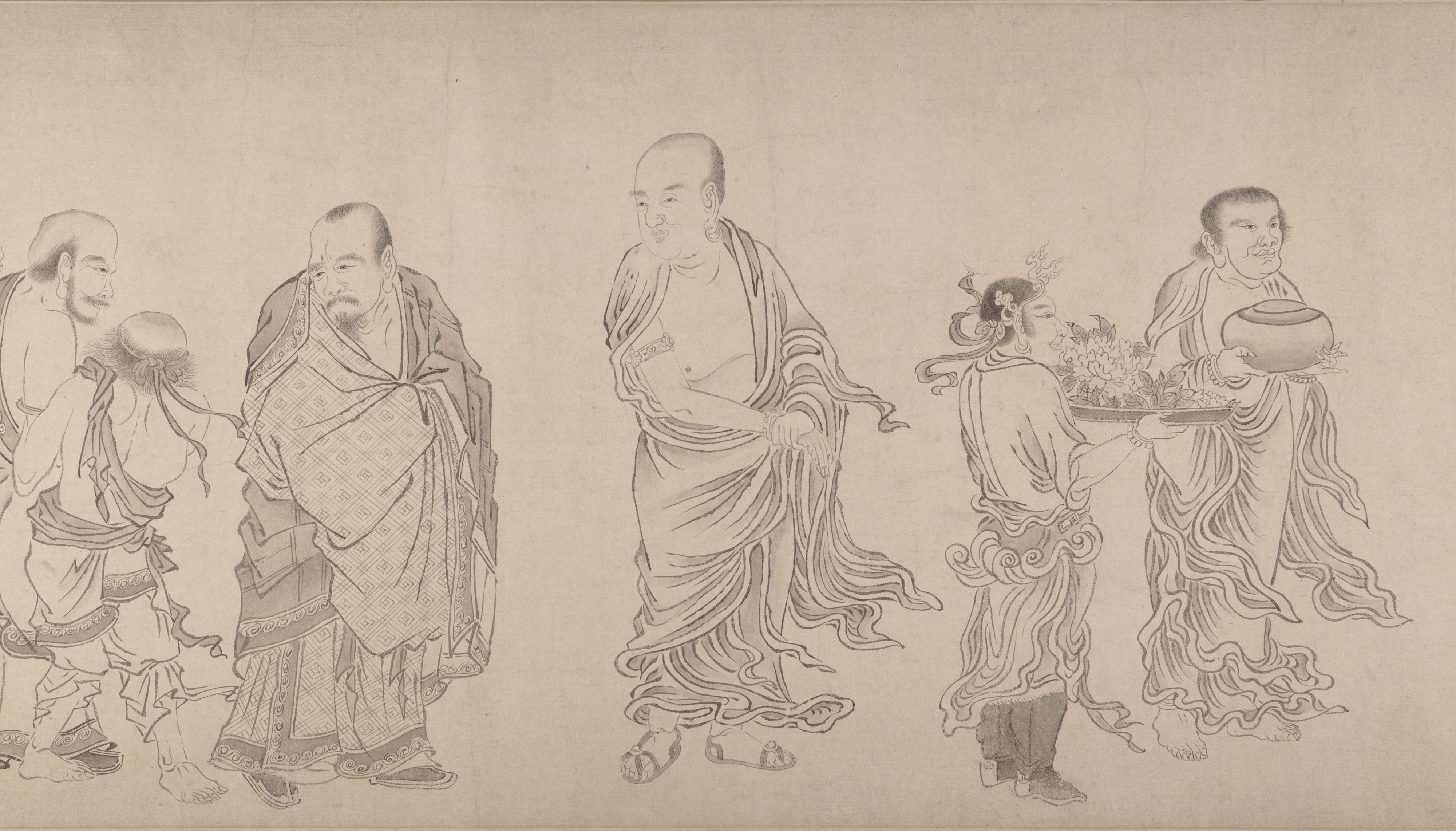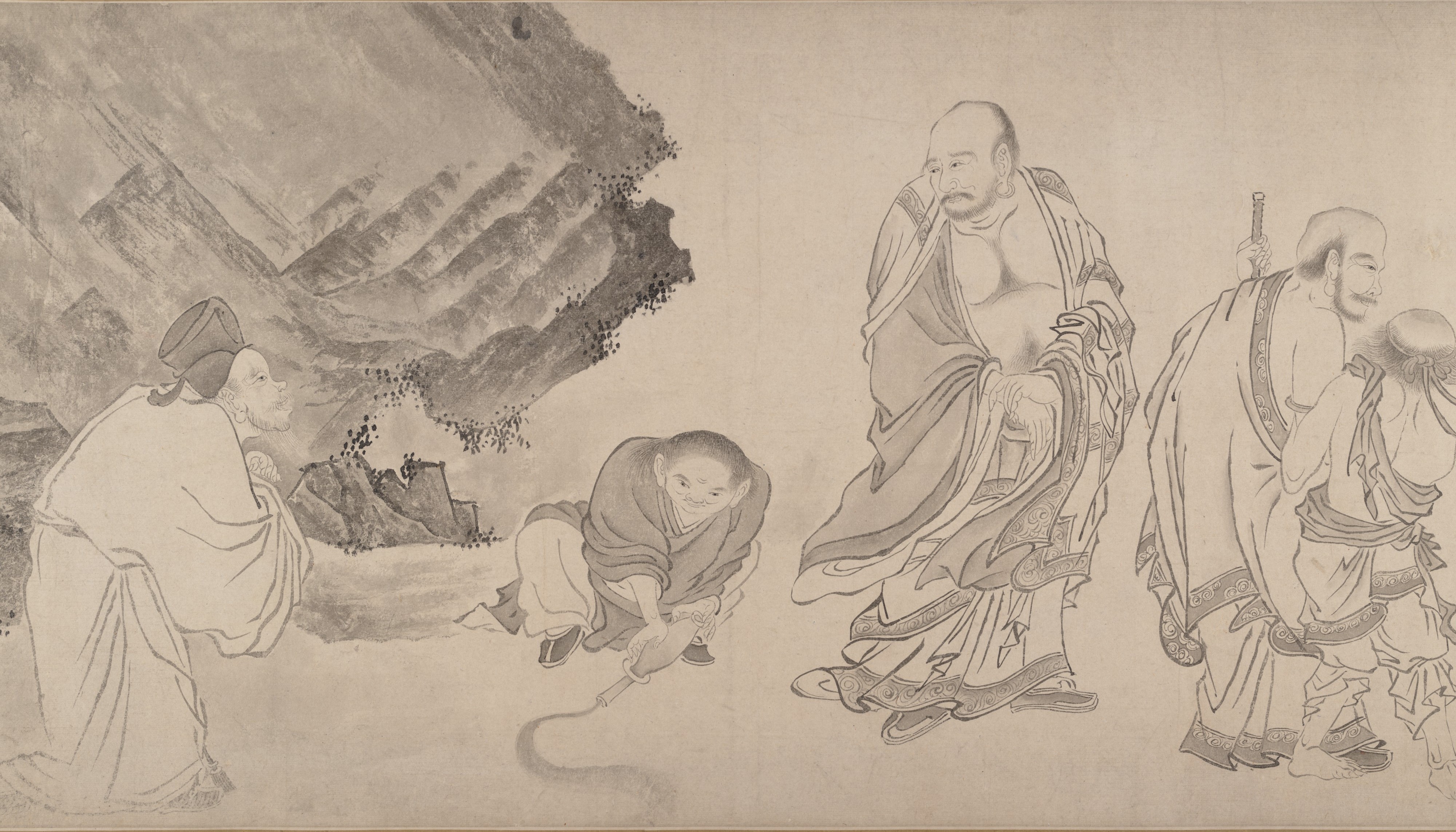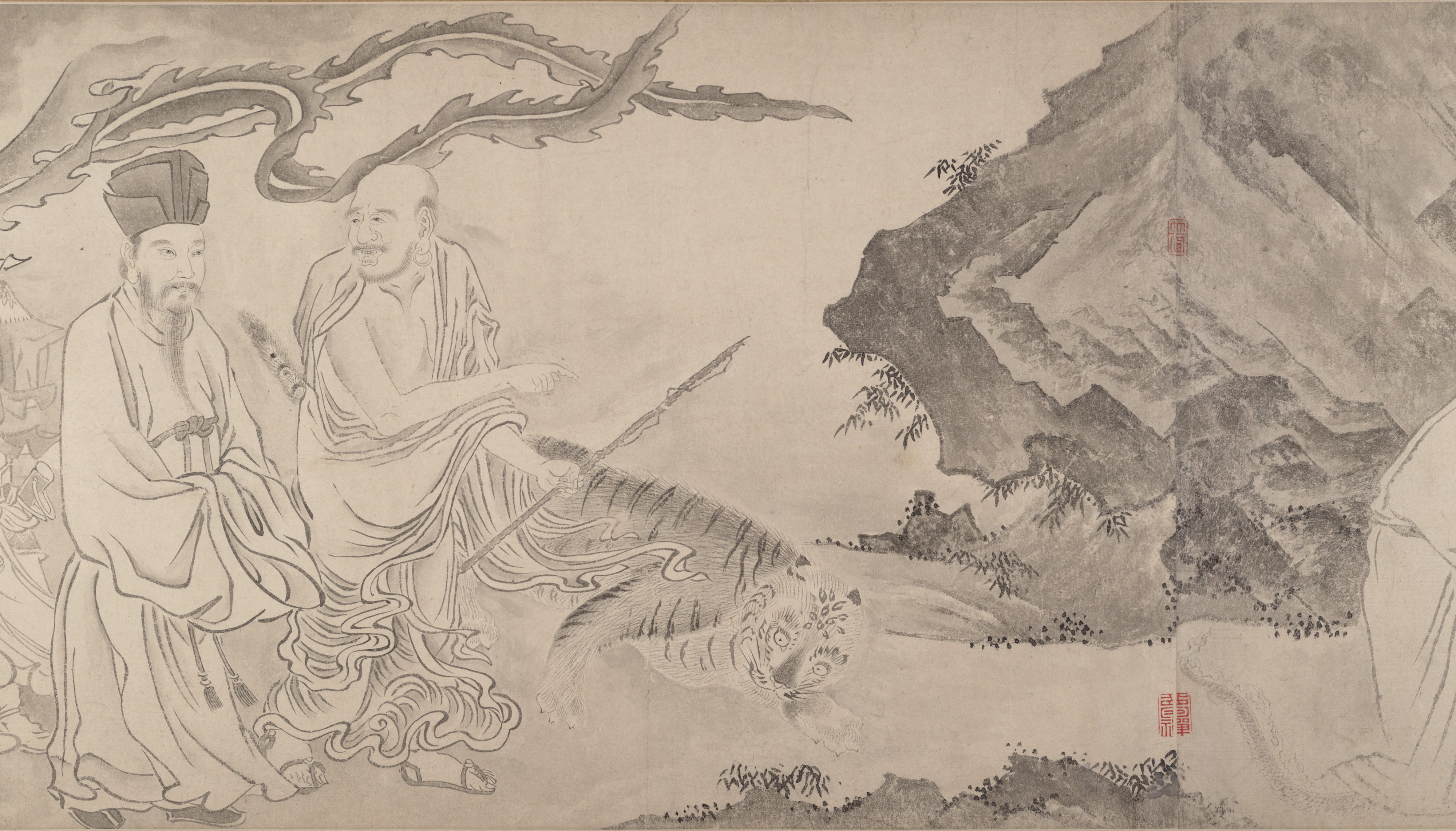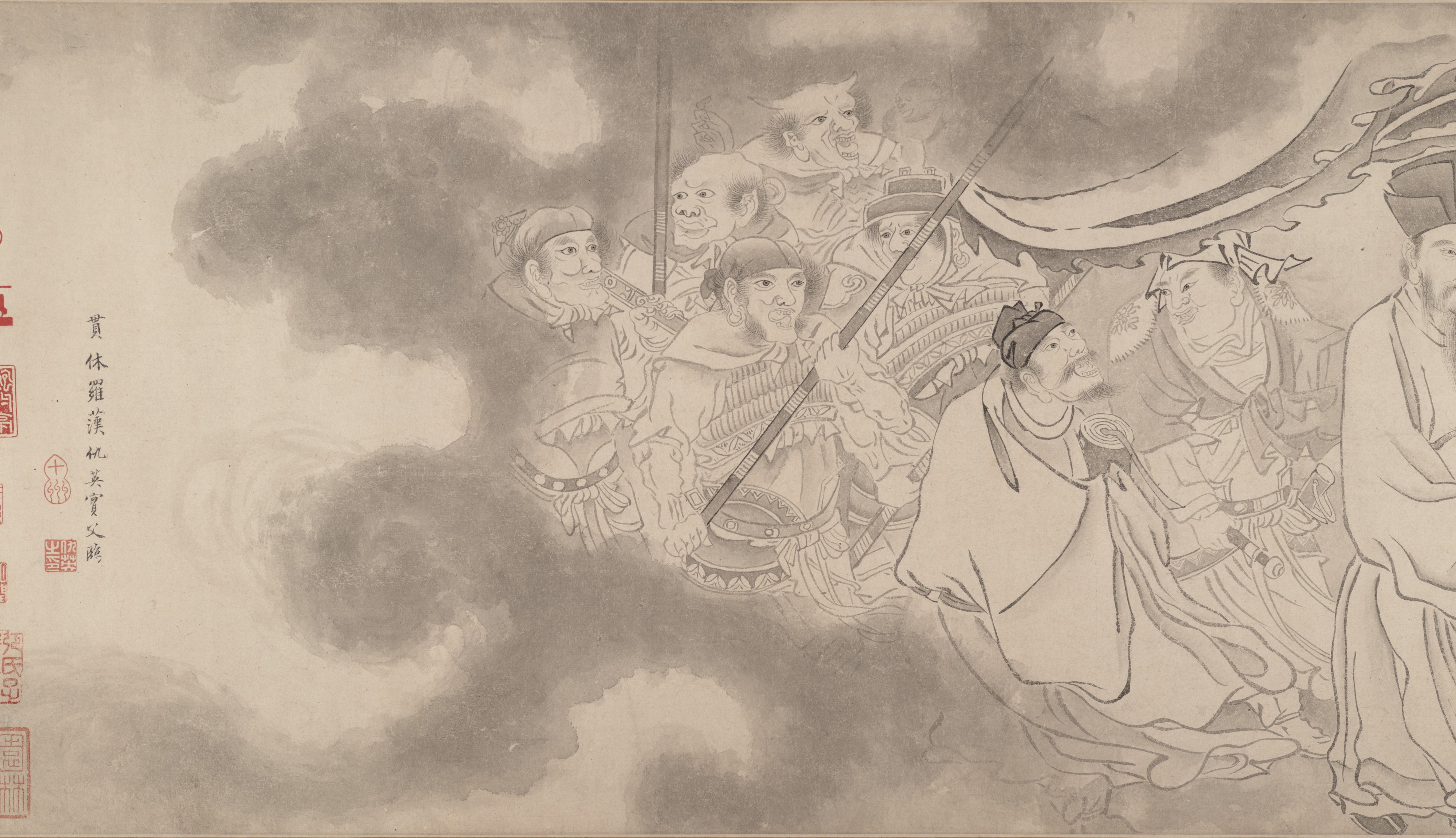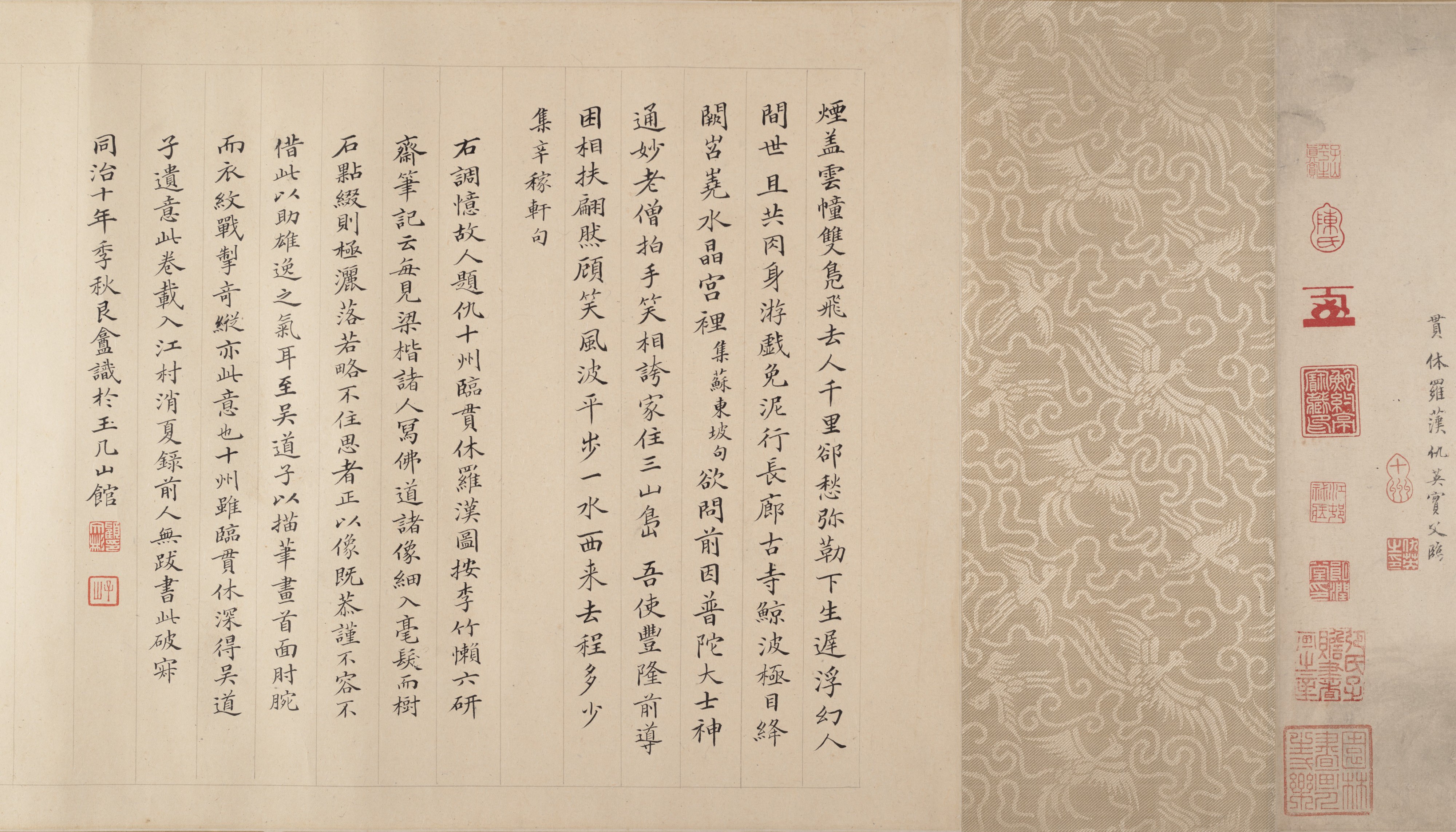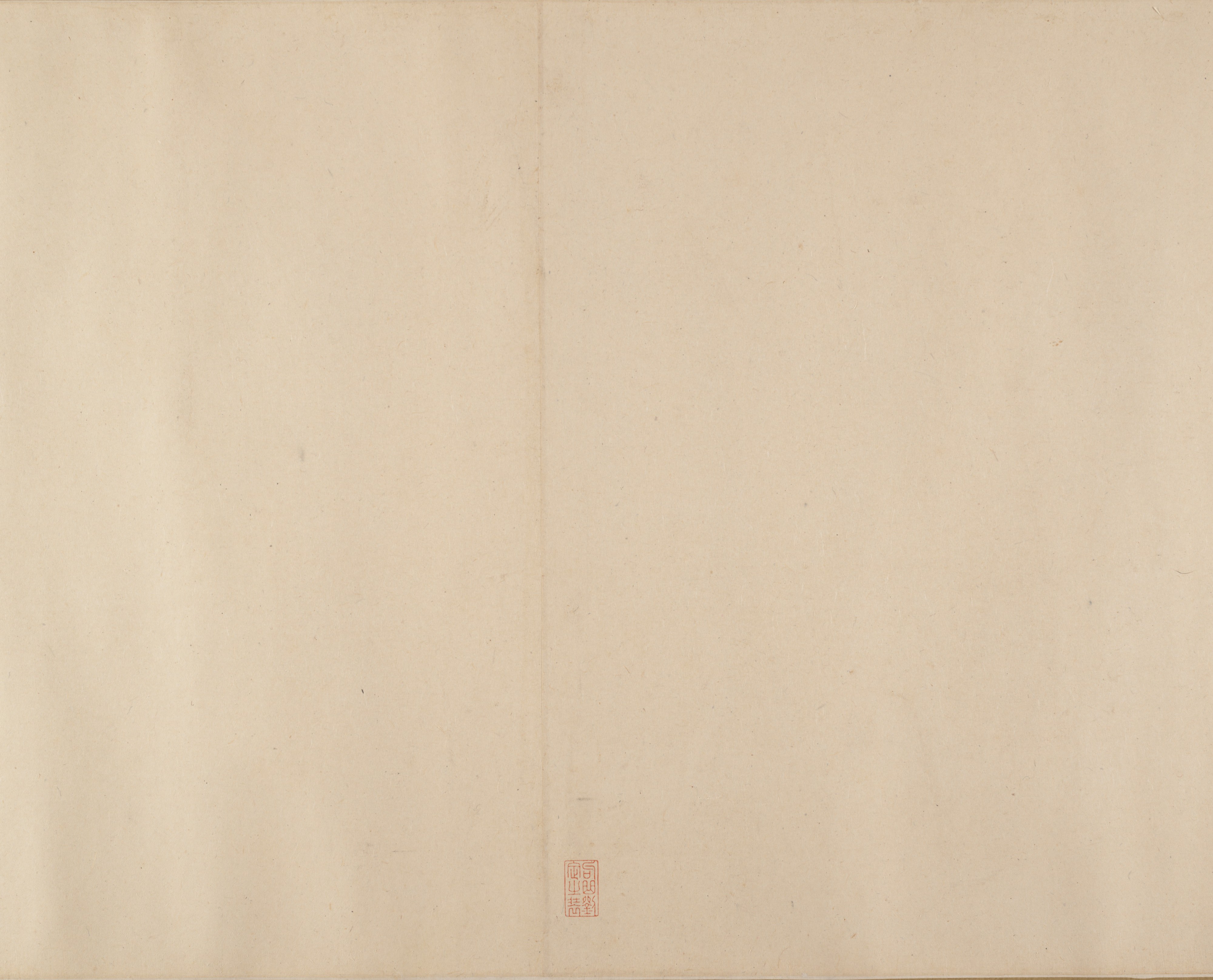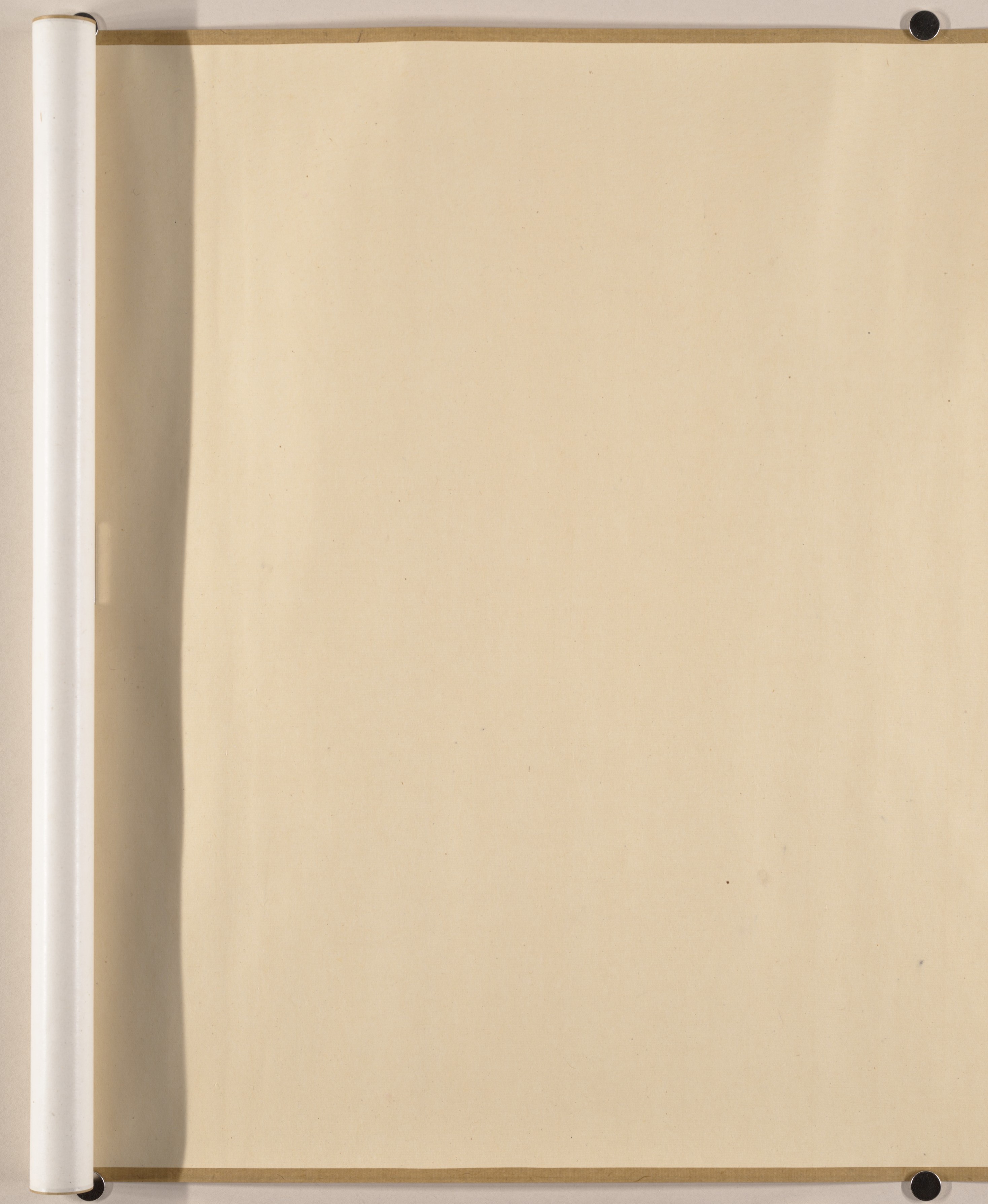The Sixteen Luohans
Attributed to Qiu Ying Chinese
Not on view
Best known for his paintings rendered in brilliant mineral colors, Qiu Ying sometimes worked in ink alone to demonstrate his skill as a draftsman. In this dynamic procession of luohans and their attendants, the figures are enlivened through exquisitely controlled, undulating and folded brush lines and luminous graded washes. Qiu's enthusiasm for detail is evident in the remarkable individualization of the holy men's eccentric features and the delicate textile designs of their robes. Although the artist's inscription credits the monk-artist Guanxiu (832–912) as the source of his inspiration, the ninth-century master's grotesque luohans have here been replaced by elegant Sinicized ascetics.
Reflecting the blending of Buddhism and Confucianism in later Chinese culture, this procession of luohans is shown ceremoniously escorting a Chinese scholar—identifiable by his tall cap and full robes—and his retinue out of the clouds.
Due to rights restrictions, this image cannot be enlarged, viewed at full screen, or downloaded.
This artwork is meant to be viewed from right to left. Scroll left to view more.
